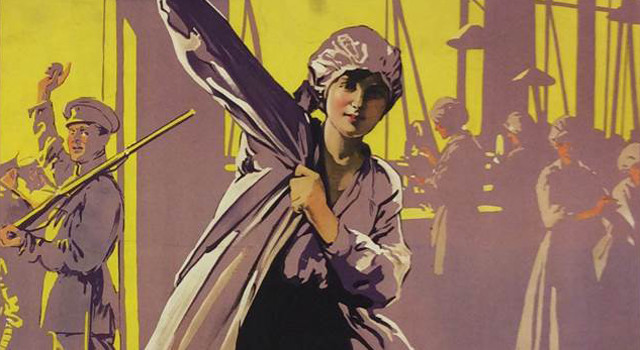Articles

No Comments
By Voices
On 11, May 2015 | No Comments | In Gender | By Voices
Labour Unrest Amongst First World War Female Workers
Chris Day and Vicky Iglikowski, The National Archives
There is a distinct image of female munitions workers during the First World War which occupies perhaps the most prominent place in Britain’s collective memory; the patriotic women who, though jaundiced and slowly poisoned, were proud to be doing ‘their bit’ and eager to take advantage of the new world of employment offered to them by the war.
![Ministry of Munitions Poster [Courtesy of The National Archives]](http://www.voicesofwarandpeace.org/wp-content/uploads/2015/05/make-munitions1.jpg) However this collective image is a distorted one. Strikes solely by women workers engaged in producing the ‘munitions of war’ (a term covering a wide range of products, from shells to boots) are far from uncommon in labour digests from the period, disputing the popularised propaganda image of female munitions workers. Women were increasingly aware of their labour rights and even in times of national crisis significant numbers of workers were prepared to strike for their own interests.
However this collective image is a distorted one. Strikes solely by women workers engaged in producing the ‘munitions of war’ (a term covering a wide range of products, from shells to boots) are far from uncommon in labour digests from the period, disputing the popularised propaganda image of female munitions workers. Women were increasingly aware of their labour rights and even in times of national crisis significant numbers of workers were prepared to strike for their own interests.
The National Federation of Women Workers, a female only trade union, echoed this in its calls to as yet unorganised female workers. The January 1916 issue of the Federation’s magazine, the Woman Worker, plays with the language of the government’s propaganda, female workers are encouraged, “do your bit for the women and children of Britain … If you do the man’s work, demand the man’s wage. Join the Union now”.
‘Equal work for equal pay’ was one of the most common reasons for strike action, particularly in light of the government’s renowned L.2 circular. Along with the ‘Treasury Agreement’ this circular issued in October 1915 promised ‘equal pay for equal work’, this ultimately set a minimum weekly rate of 20s for women doing skilled ‘male’ work. However ‘male’ jobs were often ‘diluted’ (broken down into multiple processes) to avoid being labelled ‘equal work’; and whilst 20s was a minimum, it became interpreted as a standard. In response to the realities of this circular many women in factories across the country took strike action.
Both national and localised issues brought women out on strike, with turnout ranging from 3000 to 3, indicating that even small numbers of women felt empowered to strike. One example from September 30th 1916 demonstrated a local issue, when “between 2,000 and 3,000 of the women employees of the Lancaster National Projectile Factory struck work as a protest against the dismissal of a girl. The girl had been dismissed because of misbehaviour with a male employee, who, however, had been allowed to remain in the factory.”
This range of strikes is clearly reflective of the labour movement at the time and the issues of importance to the women, demonstrating the workers sense of social justice and collective conscious.
However strike action was not the only way in which female workers attempted to improve their working conditions. Arbitration sessions were utilised to settle disputes in women’s favour, and while useful, this was clearly a long-winded and unfruitful process.
The Woman Worker labelled the government’s failure to bring its fine words about wage equality to fruition as ‘The Great Disappointment’, but between the hopeful rhetoric and disillusioned laments, there is a more nuanced narrative; the introduction of arbitration tribunals and the work of the grass routes and national unions enabled women workers to make small but significant gains. The war created a legacy for female munitions workers; a sense of greater value as part of the workforce, and an increased understanding of the government processes through which labour rights could be fought, this continued to influence the female workforce through the 1930s.



Submit a Comment